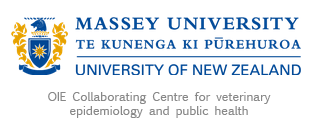Italy |
10-14 November |
20 seats |
750€ |
English |
Prior knowledge required |
Course description
Geographic Information System (GIS) is particularly important for the harmonisation, comparison and presentation of information used to support decision-making process. In the veterinary public health context, GIS is an essential technology to recognise new and re-emerging infections, to understand the factors involved in disease emergence and to plan prevention, control and eradication strategies.
The present course focuses on the application of advanced knowledge of GIS planning and spatial analysis in the control of animal diseases in general, with a particular focus on emerging avian diseases. By means of theoretical presentations and practical exercises, participants will be taught how to design a GIS project and perform spatial analysis for investigating disease clustering. Examples will be illustrated to determine both temporal and spatial evolution of epidemics, as well as maps with a scale variation to identify unexpected clustering of cases and maps derived from data interpolation to define a scale of the territorial density of events.
Mini project activity will be assigned to groups of 4 or 5 participants coupled to a staff member. The assignments will consist on essay indicating how to exploit the apprehended knowledge on GIS and other spatial tools to creatively design a framework for the analysis of a given set of data. Participants will be given the possibility to provide a set of data or a specific GIS theme that will be used in the mini project.
By the end of the course, participants will have a thorough understanding of the GIS planning strategies, data collection techniques and performance of spatial analysis of animal diseases.
The Lectures cover the following topics
- Advanced GIS Management
- Spatial Veterinary Epidemiology
Course learning objectives
Upon successful completion of this course, participants will be able to:
- consider the steps in developing and implementing a GIS,
- understand the management, planning, and strategic challenges for the use of GIS in organizations,
- analyze real world cases involving GIS and spatial analysis in epidemiology and control of animal diseases,
- understand the basic principles of global, local and focused spatial analysis,
- apply basic and advanced spatial analysis algorithms to detect clustering of events, to generate sound epidemiological hypothesis.
Course Language
English.
Venue
The course will be held at Villa Franceschi, a beutiful place nearby Venice. More info in Venue section.
Prerequisites
- knowledge of basic GIS principles
- attendees have to bring their own laptop
- QGIS software (http://www.qgis.org) need to be already installed
- SaTScan software (http://www.satscan.org/) need to be already installed.
Jointly organized by:



